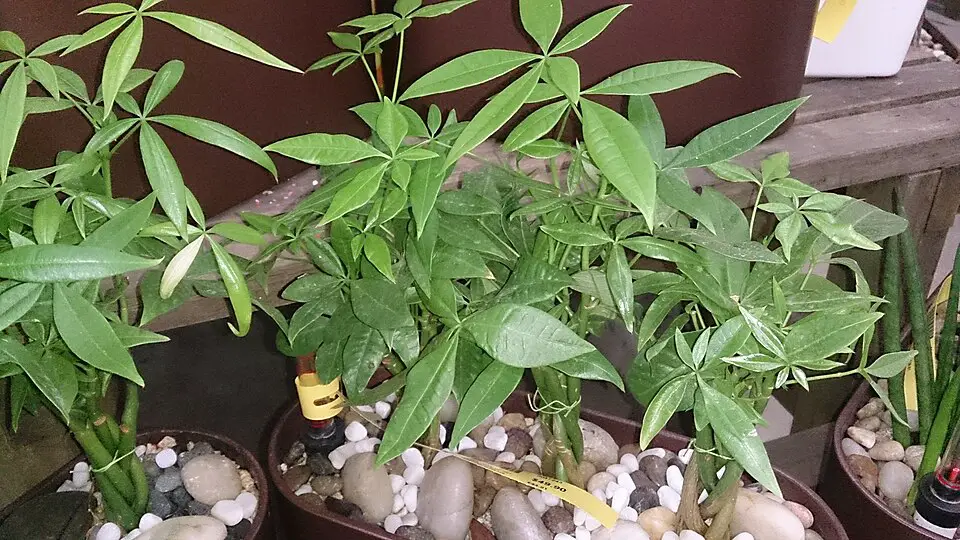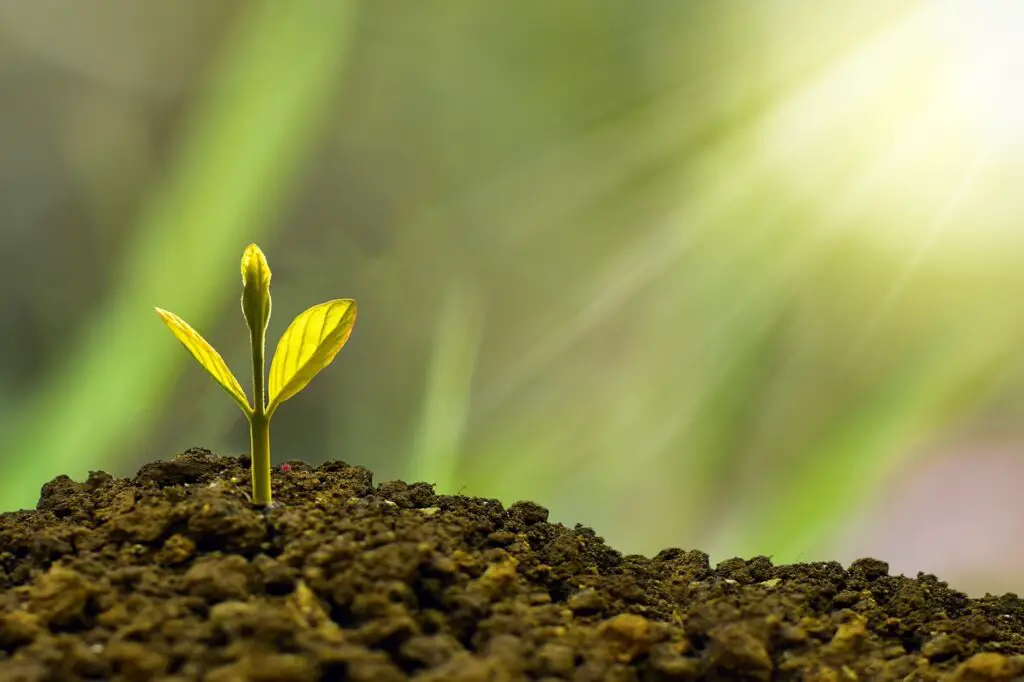Money tree braiding involves intertwining the trunks of young Pachira aquatica plants. This technique is often used to create an aesthetically pleasing appearance while promoting growth. The process is simple and can be done with just a few easy steps.
Understanding the Money Tree
The money tree, scientifically known as Pachira aquatica, is a popular houseplant believed to bring good luck and prosperity. Originating from Central and South America, this plant thrives in warm, humid conditions. Its unique braided trunk makes it particularly appealing to plant enthusiasts.

Money trees can grow up to 60 feet tall in their natural habitat, but as houseplants, they are often kept much smaller. The leaves are palmate, consisting of several leaflets that resemble a hand. This plant is not only beautiful but also known for its air-purifying qualities.
Benefits of Braiding Money Trees
Braiding the trunks of money trees offers several advantages. Here are some key benefits:
- Aesthetic Appeal: A braided trunk adds a unique touch to your home décor.
- Stability: The braiding technique helps support the plant as it grows.
- Encourages Growth: Braiding can promote healthier growth by allowing light to reach different parts of the plant.
Materials Needed for Braiding
Before you start braiding your money tree, gather the following materials:
- Three or more young money tree plants.
- Sharp scissors or pruning shears.
- Plant ties or soft strings (to secure the braids).
- A pot with good drainage (if you are transplanting).
- A well-draining potting mix.
Step-by-Step Instructions for Braiding
Follow these simple steps to braid your money tree:
- Select Your Plants: Choose three young money tree plants with straight and flexible trunks. Ensure they are healthy and free from pests.
- Prepare the Plants: Remove any lower leaves on the stems up to about a foot high. This will ensure that you have enough trunk length to braid.
- Braid the Trunks: Gently twist the three trunks together starting from the base. Make sure to maintain an even tension as you braid.
- Secure the Braid: Once you reach the desired height, use plant ties or soft strings to secure the braid at the top. Avoid using anything too tight that might damage the trunks.
- Repot (if necessary): If your plants were in small pots, consider repotting them into a larger pot with fresh potting soil.
Care After Braiding
After braiding, it is essential to provide proper care for your money tree:

- Light: Place your money tree in a bright location but avoid direct sunlight, which can scorch the leaves.
- Watering: Water when the top inch of soil feels dry. Be cautious not to overwater.
- Humidity: Money trees prefer humidity. Mist the leaves occasionally or use a humidifier if your home is dry.
Common Issues and Solutions
When caring for your braided money tree, you may encounter some common issues:
| Issue | Solution |
|---|---|
| Yellowing Leaves | Check for overwatering or poor drainage. |
| Dropping Leaves | Ensure consistent watering and humidity levels. |
| Pest Infestation | Use insecticidal soap or neem oil as needed. |
By following these instructions and providing proper care, you can successfully braid your money tree and enhance its beauty in your home. Enjoy watching your plant thrive!
Advanced Techniques for Money Tree Braiding
Once you have mastered the basic braiding technique for your money tree, you may want to explore advanced methods. These techniques can enhance the appearance of your plant and allow for more creative designs. Below are some advanced braiding techniques and tips to further elevate your money tree experience.

Double Braid Technique
The double braid technique involves creating two separate braids from a single grouping of trunks. This adds complexity and visual interest to the plant.
- Prepare the Trunks: Similar to the basic braid, remove any lower leaves and ensure you have at least three straight trunks.
- Create the First Braid: Braid the first set of trunks together as you would normally.
- Start the Second Braid: Once the first braid is complete, take another set of trunks (including some from the first braid) and repeat the braiding process.
- Secure Both Braids: Use plant ties to secure both braids at the top, ensuring they look cohesive.
Creating a Spiral Braid
A spiral braid creates a unique visual effect that can make your money tree stand out even more. Here’s how to achieve this design:
- Select Your Trunks: Choose three or more trunks that can be easily twisted together.
- Twist and Braid: Instead of simply interweaving the trunks, twist them around each other in a spiral motion. This will give the appearance of a corkscrew.
- Maintain Tension: Keep a consistent tension while twisting to ensure that the braid holds its shape.
- Secure the Ends: Use ties or strings to secure the bottom and top of the spiral braid.
Using Decorative Elements
Incorporating decorative elements can enhance the aesthetic appeal of your braided money tree. Consider these additions:
- Ribbons: Wrap colorful ribbons around the braids for a festive look.
- Beads: Attach beads or small ornaments to the braids for added visual interest.
- Lighting: Place small LED lights around the base or inside the plant for a charming glow at night.
Optimal Growth Conditions for Money Trees
To ensure that your money tree thrives after braiding, it is essential to provide optimal growing conditions. Here are some key factors to consider:

Light Requirements
Money trees prefer bright, indirect light. While they can tolerate some direct sunlight, too much can scorch their leaves. Consider these tips for adequate lighting:
- Placement: Position your money tree near a window that receives filtered light.
- Rotation: Rotate the plant occasionally to ensure even growth on all sides.
Watering Practices
The watering schedule for money trees is crucial for their health. Here are some recommendations:
- Check Soil Moisture: Always check the top inch of soil before watering. Only water when it feels dry.
- Avoid Puddling: Ensure that excess water drains away to prevent root rot.
Nutritional Needs
Providing proper nutrients can significantly enhance the growth of your money tree. Consider fertilizing as follows:
- Fertilizer Type: Use a balanced liquid fertilizer formulated for houseplants.
- Frequency: Fertilize every four to six weeks during the growing season (spring and summer).
Pest Management and Prevention
Pests can pose a threat to your money tree’s health. Understanding common pests and preventive measures is essential. Here are some common pests and solutions:
| Pest | Signs | Prevention/Treatment |
|---|---|---|
| Spider Mites | Fine webbing on leaves | Increase humidity and mist leaves regularly. |
| Aphids | Sticky residue on leaves | Wash leaves with water or use insecticidal soap. |
| Mealybugs | Cotton-like
Repotting Your Money Tree>Repotting is a vital aspect of maintaining a healthy money tree, especially as it grows. Over time, your plant may outgrow its pot, leading to root-bound conditions that can stunt growth and affect overall health. Here’s how to determine when to repot and the steps to do it effectively. When to RepotKnowing when to repot is crucial. Here are several signs that indicate it’s time to move your money tree to a larger pot:
Steps for RepottingRepotting your money tree is a straightforward process. Follow these steps for a successful transition:
Propagating Money TreesIf you want to expand your collection or share with friends, propagating your money tree is an excellent option. Here’s how you can successfully propagate this plant. Methods of PropagationMoney trees can be propagated through stem cuttings or by seed. The following methods focus on stem cuttings, which are more common for houseplants. Stem Cutting PropagationThis method is straightforward and highly effective. Here’s how to do it:
Care for New CuttingsCaring for your new money tree cutting is crucial for its success. Here are some essential tips:
Tips for Maintaining a Healthy Money TreeTo keep your money tree thriving throughout its life, consider these maintenance tips: Regular PruningPruning helps maintain shape and encourages bushier growth. Here’s what to do:
Avoiding OverwateringThe biggest mistake many plant owners make is overwatering. To avoid this common issue:
Pest MonitoringPest prevention is key to maintaining a healthy money tree. Regular checks can help catch issues early:
By implementing these practices, your money tree will not only thrive but also become a stunning focal point in your home or office space. Enhancing Your Money Tree’s EnvironmentCreating a co nducive environment for your money tree goes beyond just watering and light. Here are additional factors to consider for optimal growth: Humidity LevelsMoney trees thrive in humid conditions. To maintain adequate humidity:
Temperature ControlMoney trees prefer stable temperatures between 60°F and 75°F. Sudden changes in temperature can stress the plant. To keep your tree healthy:
Seasonal Care AdjustmentsYour money tree’s care may change with the seasons. During the winter months, it’s important to adjust your care routine:
Common Myths About Money TreesThere are many my ths surrounding the care and symbolism of money trees. Understanding these can help you provide better care: Myth: Money Trees Bring Wealth AutomaticallyWhile money trees are often associated with prosperity, they require care and attention to thrive. Simply having one does not guarantee financial success. Myth: They Don’t Need Any PruningSome believe that money trees do not require pruning. In reality, regular pruning helps maintain their shape and promotes healthier growth. Final ThoughtsBraiding your money tree is an enjoyable and rewarding process that enhances its beauty while promoting healthy growth. By understanding the proper care techniques—such as watering schedules, light requirements, and pest management—you can ensure that your money tree thrives for years to come. The advanced techniques discussed, including double braids and spiral braids, allow for creativity in how you display your plant. Additionally, repotting, propagation, and maintaining optimal environmental conditions are crucial for sustaining a healthy money tree. In summary, whether you are a novice or an experienced plant enthusiast, caring for a money tree can be a fulfilling experience. With the right knowledge and consistent care, your money tree will not only flourish but also serve as a beautiful centerpiece in your home or office. As you embark on your journey with your money tree, remember to enjoy the process. Watching your plant grow and thrive is indeed a rewarding experience that brings both beauty and joy into your life. Related Posts:
Categories: Plants |
